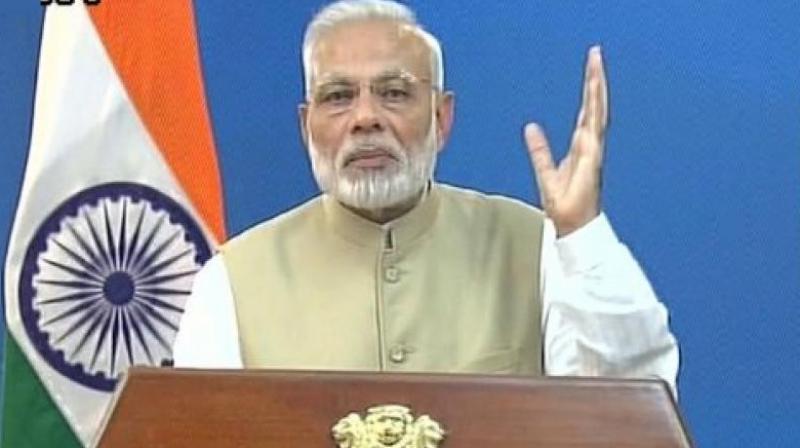Note ban failed to achieve its purpose

Exactly one year ago, Prime Minister Narendra Modi took the drastic step of demonetising Rs 500 and Rs 1000 notes, amounting to 86 per cent of the total currency in circulation. This unprecedented move was taken purportedly to wipe out black money, curb terrorism and do away with fake currency notes. Later on, the government also announced moving towards cashless economy as one of the objectives of demonetisation, which found no mention in Mr Modi’s speech on November 8.
After one year, how do we assess the impact of demonetisation on its stated aims and on the economy in general?
It was expected by many that a sizeable portion of the banned notes, amounting to Rs 4-5 lakh crore will not come back to the banking system. These non-returned notes would be the net loss to the black economy and a gain for the RBI, since the liability on these notes will be extinguished. Mr Modi said in one of his speeches that rich people are throwing their notes in the river Ganges. However, contrary to such exaggeration, the RBI’s Annual Report 2016-17 published on August 30, showed that out of Rs 15.44 lakh crore worth of banned notes, Rs 15.28 lakh crore or 99 per cent of them have come back to the banks — destroying all the claims of a windfall for RBI through extinguished liability on the account of non-deposited notes.
Faced with such an embarrassment, the government is claiming that they will unearth black money and increase tax collections even after these deposits have been made. But what do the figures say? According to the Economic Survey, it is estimated that an additional Rs 10,587 crore tax will be collected because of demonetisation. The same report shows that the total tax collected as a share of GDP was 11.1 per cent in 2016-17, projected to increase to only 11.3 per cent in 2017-18, a rise of a mere 0.2 per cent. The personal income tax GDP ratio will increase from a paltry level of 2.2 per cent to 2.6 per cent between 2016-17 and 2017-18. The amount of black money seized ('1,003 crore till May 2017), benaami property attached ('600 crore) or identified money laundered by shell companies (reportedly Rs 17,000 crore) does not amount to a substantial sum. The government’s argument that in the future such money will be unearthed and attached is like giving a post-dated cheque to the people, which might bounce since most of these will be challenged in the courts.
The claims regarding demonetisation stopping terrorist attacks are also completely false. As per the South Asia Terrorism Portal, in the year 2016, 382 people (civilian and military) were killed in India due to terrorism. However, in 2017, up to October 29, the number is 315. In short, there has been no perceptible impact on terrorist activities as a result of demonetisation. Terrorism is a complex socio-political issue which is funded not only by cash but by other sophisticated payment methods. To say that terrorism can be wiped out by banning currency notes is plain hyperbole.
Mr Modi’s claim about the note ban curbing fake notes is also found to be untrue. According to the RBI’s Annual Report, only Rs 41.5 crore worth of fake notes was detected in Rs 500 and Rs 1000 notes deposited in the banks, which amounts to 0.003 per cent of the total deposited notes. Demonetising 86 per cent of the currency in circulation to neutralise such a minuscule amount of fake notes is utterly absurd. With regard to cashless transactions, if we look at the data for India, it is seen that digital payments, after peaking in December 2016, are back to the levels broadly seen in September-October 2016. It is also to be noted that ATM cash withdrawals are back to the levels before the note ban. Such trends essentially show that an overwhelming proportion of people has not moved away from cash.
While demonetisation appears to have failed in achieving its stated objectives, it has taken a heavy toll on the economy. The growth rate of GDP in the second quarter of 2017-18 has come down to 5.6 per cent, which is the lowest in the last three years. It has also hurt the informal sector where majority of the people are employed. Additionally, dividends of the RBI to the government has been more than halved from Rs 65,876 crore to Rs 30,659 crore. This has been a result of extra costs on new note printing (Rs 4,554 crore) and higher interest payments on deposits, brought about due to demonetisation (Rs 18,000 crore). The total gain in terms of higher tax collections and unearthing black money is pretty nominal compared to these losses. The time has come to ask tough questions and demand accountability from the government for pursuing such a faulty policy.

